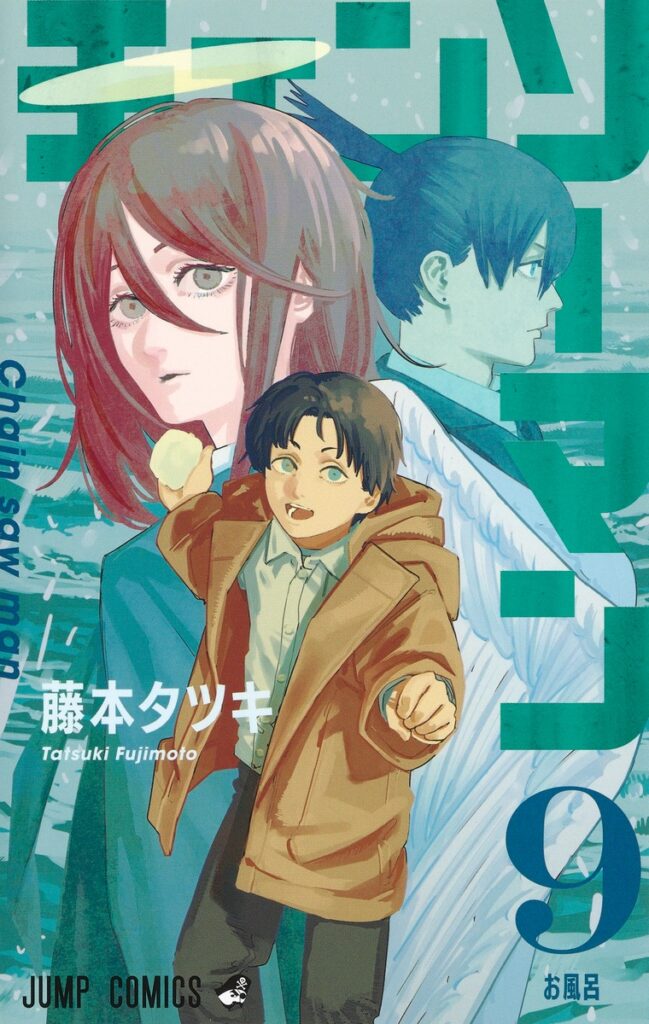Meta Description:
Discover the true timeline of Chainsaw Man Part 1 — set in 1997–2000 — and learn why the world has no cell phones, no World War II, and a Soviet Union that still exists.
Introduction
In today’s world, it’s hard to imagine life without smartphones. Yet, in Chainsaw Man, no one ever texts, makes a call, or checks social media. Fans have long wondered: when exactly does the story take place, and why does its world feel “off” from our own reality?
Let’s dive into the timeline and hidden worldbuilding details of Chainsaw Man Part 1, revealing why its setting feels like the late 1990s — but in a completely different version of history.
The Time Period: Around 1997–2000

Image Credit : shueisha.co.jp
The exact year is confirmed in Volume 9, Chapter 75 — Chainsaw Man Part 1 is set in 1997.
This fits perfectly with the story’s aesthetics: analog televisions, payphones, old-school cars, and retro cityscapes.

Image Credit : konami.com
Further evidence appears in Volume 10, when Kobeni is forced to dance to a game called “Dance Dance Mushroom.”
This is a clear parody of Dance Dance Revolution, which hit Japanese arcades in 1998.
So, the world of Chainsaw Man seems to mirror late 1990s Japan, roughly between 1997 and 2000.
Why Are There No Cell Phones in Chainsaw Man?
Even though mobile phones existed in the late 1990s, they weren’t common. In Japan, early phones were bulky, expensive, and usually rented — not the portable flip phones (garakei) we remember from the 2000s.
A Quick Real-World Timeline
- 1987: Japan’s first “mobile phones” appear — the heavy shoulder phones (shōrudāfon).
- 1990s: Still expensive; mostly used by business professionals.
- 1999: Flip phones and simple mobile internet (i-mode) launch.
- Before that: Most people used pagers (pokebell) or PHS (personal handy-phone system).
Yet in Chainsaw Man, there are no pagers, PHS devices, or cell phones at all. Even Devil Hunters — who clearly need field communication — rely entirely on radios or face-to-face contact.
This suggests that in Fujimoto’s world, mobile communication technology never developed, or it was lost due to historical changes caused by devils.
The USSR Still Exists — And WWII Never Happened
One of the biggest hints about the alternate timeline comes from Aki Hayakawa, who mentions the Soviet Union.
In our real world, the USSR dissolved in 1991 — six years before Chainsaw Man’s 1997 setting.
So, why does it still exist?
In Volume 10, Chapter 83, Makima tells Kishibe that both the Nazis and World War II have been erased from history by Chainsaw Man himself.
“The concepts of the Nazis and World War II were devoured by Chainsaw Man.”
Without WWII or the rise of Nazi Germany, the Cold War as we know it likely never occurred. That means the Soviet Union may never have collapsed — explaining why it remains a major world power in Chainsaw Man’s universe.
Alternate History: A World Without the 20th Century as We Know It
Here’s how reality diverges:
| Real World | Chainsaw Man Universe |
|---|---|
| WWII (1939–1945) shapes global politics | WWII and Nazis never existed |
| 1991: USSR collapses | USSR still exists in 1997 |
| 1990s: Cell phones and pagers spread | No cell phones, pagers, or PHS |
| Rapid global communication | Analog communication only |
Fujimoto’s world isn’t just stuck in the 90s — it’s a reconstructed version of history, missing key events and technologies that shaped modern society.
Update: Cell Phones Finally Appear in Part 2
Interestingly, in Chainsaw Man Part 2, flip phones finally make an appearance. This could mean one of two things:
- The story has moved slightly forward in time.
- Technology in this universe is progressing slowly, recovering from a distorted timeline.
Either way, it marks a shift toward modernity — but still within the strange, uncanny reality Fujimoto has built.
Conclusion: 1997, But Not Our 1997
The world of Chainsaw Man exists in a twisted reflection of our own — a 1997 where history itself has been eaten. No WWII, no Nazis, no cell phones, and a Soviet Union that never fell.
This eerie mix of realism and absence creates the unsettling atmosphere that defines the series. Fujimoto doesn’t just build a horror world of devils — he builds a world where reality itself has been devoured



コメント